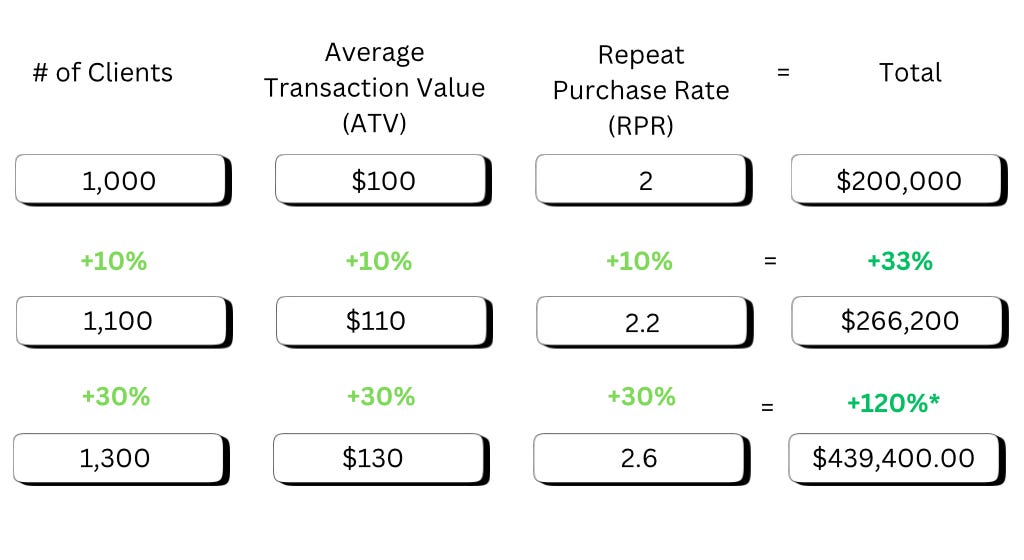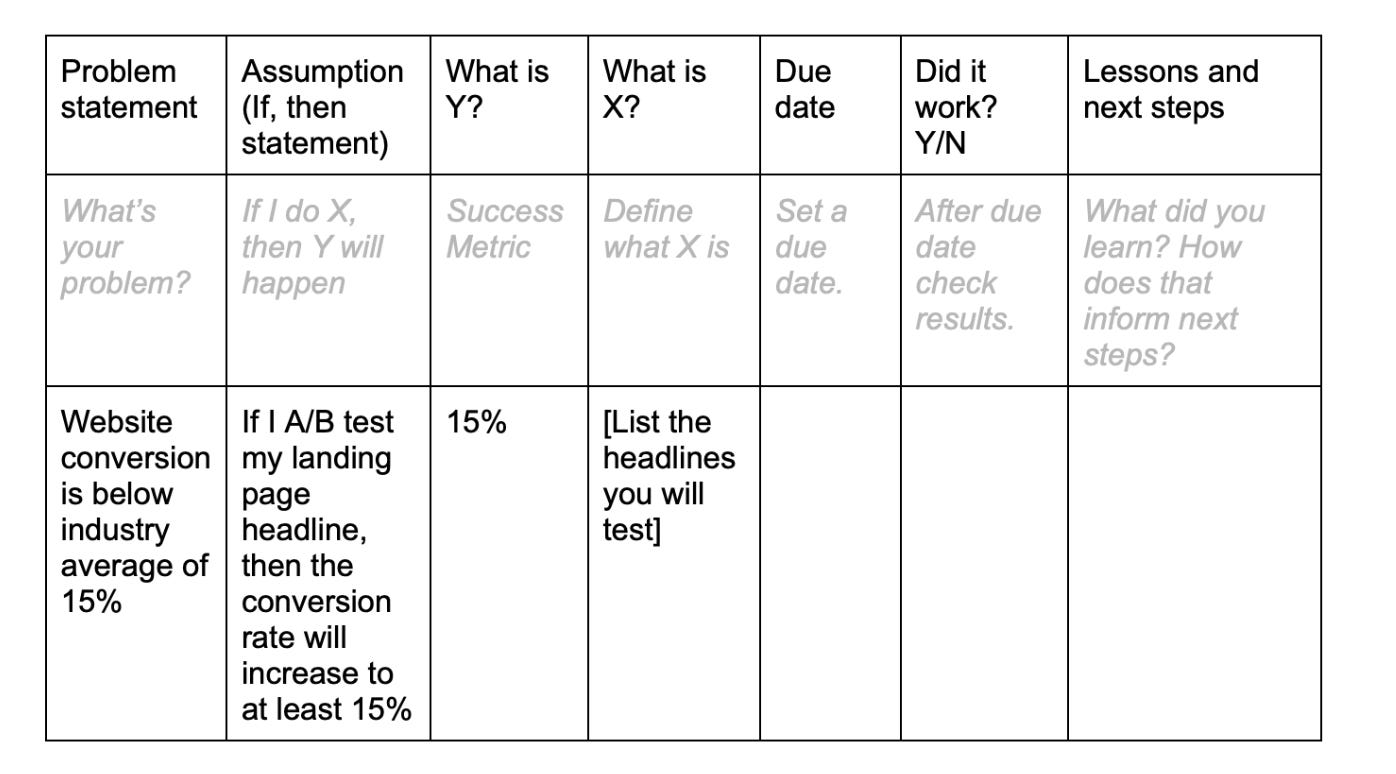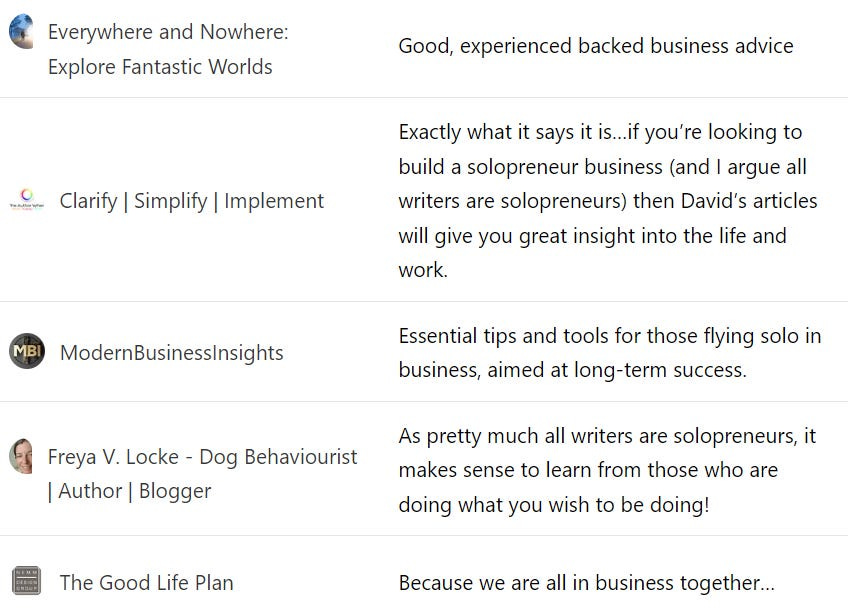The 80/20 Revenue Framework
Maximise profit by focusing on the few things that really matter.
The Solopreneur Stack helps solo-business people become (and remain) successful and sustainable through quick tips, in-depth guidance and personal experience stories. Become a paid subscriber for just £8 a month and unlock every article and resource in our archive.
Do you feel like hundreds of things are pulling at your attention, but as a team-of-one, you need help prioritizing and acting on the most important tasks? Do you often get to the end of the day and wonder what you accomplished?
I'm going to share a framework that I developed over 15 years of working in digital businesses. It is part of my essential business toolkit.
Consider it a cheat sheet for helping you get unstuck when you:
Need help figuring out what to focus on
Are in analysis paralysis
Feel overwhelmed or are swirling.
It offers tactical ideas to help spark your thinking when you get stuck. However, it is a partial list not an answer key to all your business problems.
Ad | Personal Brand Studio
An actionable guide to help you build and monetize your personal brand through a digital ecosystem.
Based on the author's story building her personal brand across LinkedIn, Medium and Substack and becoming a public speaker and an award-winning author.
Interested in sponsoring The Solopreneur Stack? Just email hello@davidmcilroy.com.
Who is this for?
This article is for:
Beginner entrepreneurs
Solo-practitioners who don't identify as entrepreneurs but sell products and/or services.
Somewhat experienced solopreneurs who feel stuck, overwhelmed and/or want a refresher to spark some new ideas or direction.
Who am I?
When I'm not on Substack, I am the Chief of Staff to the CEO of a private tech incubator.
For the past 15+ years, I've launched, grown (and butchered) over a dozen startups and digital businesses in the e-commerce, online marketplace, advertising, and affiliate marketing spaces.
During this time, I've experienced many of the pains and gains of entrepreneurship and have been fortunate enough to have been taught (directly and indirectly) by some pretty brilliant business minds like Alex and Leila Hormozi, Seth Godin, Patrick Lencioni, Perry Marshall, Dr. Alan Barnard and Jay Abraham.
What is the 80/20 Principle, and why should you care?
The 80/20 Principle (aka Pareto Principle) states that roughly 20% of our actions or activities account for 80% of our results or outcomes.
Vilfredo Pareto, an economist and polymath, first observed this phenomenon in 1906 when he noticed that 20% of the people owned 80% of the property in Italy. A management consultant, Joseph Juran, later popularized the principle in business.
Microsoft applies this principle to code. It's a general rule of thumb that approximately 20% of the code contains 80% of the bugs. Finding and resolving the top 20% of most reported bugs eliminates 80% of the related errors and crashes in a given system.
As a solopreneur, you run a lean operation, so you need to be as efficient as possible. The 80/20 Principle can help you extract the most value from your limited energy and resources, the same way Microsoft does.
Do you know:
Who are the top 20% of your customers who bring in 80% of your revenue?
What are the top 20% of your issues that cause 80% of your returns or complaints?
What are the top 20% of your products that generate 80% of your revenue?
What are the top 20% of your traffic sources that produce 80% of your conversions?
How would knowing the answers to these questions change how you work on your business?
By the end of this article, I hope you will be on your way to answering some of these questions and applying the 80/20 principle to improve your business with so much more ease and less effort.
Let's get started!
80/20 formula that skyrockets revenue
Years ago, I learned a basic formula for increasing revenue. Since then, it has been my go-to idea-generation tool when I need inspiration.
The formula is inspired by Jay Abraham's Power Parthenon Strategy. According to Jay, there are three key levers you can pull to increase your revenue.
Increase your number of clients (NOC)
Increase your average transaction value (ATV)
Increase your rate of repeat purchases (RPR)
Increasing any one of these metrics will grow your revenue, but the magic happens when you increase all three.
"Compound interest is the eighth wonder of the world. He who understands it, earns it; he who doesn't, pays it."
–Albert Einstein
If you increase all three of the levers by 10%, your revenue will increase by 33% (not 30%).
If you increase all three of the three levers by 30%, your revenue will increase by 120% (not 90%).
This is the power of compounding.
Take a look at the table below:
🔑 It’s important to establish baseline metrics for each lever before you launch into the framework. Here is a cheat sheet for how to calculate them.
Consider supporting The Solopreneur Stack!
Upgrade to our paid tier to unlock every article in the archive and gain free access to our online course. Become a Sustaining Member for a little bit extra and book a 1-to-1 coffee chat with David McIlroy.
The 80/20 Revenue Framework
The framework is broken down into four steps that you will repeat until the end of time. You will want to build this process into your routine (like you do with content creation).
✨ The good thing is that you only need to carve out 20% of your time (or 90 minutes per day) for this work. I guarantee you are currently wasting 90 minutes a day doing things of lower value that you can swap out.
Step 1: Identify your 80/20 lever
Now that you have baselines for each of your three key revenue metrics, it's time to figure out what is your first 80/20 lever.
In other words, what is the #1 thing that if you fixed it, would have the greatest impact on your revenue?
If you want to increase your number of clients, start by finding out who are the top 20% of your customers who bring in 80% of your revenue.
If you want to increase your average transaction value, start by finding out what are the top 20% of your products that generate 80% of your revenue. Then, brainstorm upsells, cross-sells, and experiential offers that may be complimentary. Talk to your top 20% of clients for ideas.
If you want to increase your Rate of Repeat Purchases, start by finding out what are the top 20% of your issues that cause 80% of your returns and complaints. And again, talk to your top 20% of clients for ideas.
Need help with ideas? Check out this list.
Now that you have baseline metrics for your three key levers, it's time to determine the 80/20 lever.
Step 2: Set up your 80/20 experiment
Now that you have selected the 80/20 lever to focus on, it's time to set up your first experiment. Fill out the following table:
Step 3: Learn from your results
At the end of the test period, review your findings. Did it work? What did you learn. Journal what you learned. The results matter, but the lessons are just as important.
Take time to reflect before jumping into your next experiment.
Step 4: Repeat
After you have reflected and integrated what you learned from the last experiment, it's time to start again.
Use the insights gained from the last experiment to refine and iterate your approach for this next one.
Knowing what you know now from your last experiment, what is the next 80/20 experiment you want to run? Keep running experiments, and eventually, you will see the results begin to compound. Aim for continuous improvement.
The 1% rule states that if you get 1% better each day for 365 days, you'll be 37x better by the end of the year. Be patient, consistent and tenacious.
Tips for Success
Be consistent. Carve out 20% of your time for this work and make it an ongoing priority (like creating content, it never ends).
Focus on the 80/20. Always start with the #1 most pressing issue. You might have to run several experiments before you finally solve the problem.
Be patient. You might not see drastic results from your first few experiments, but as your skills improve and the results accumulate, they will compound.
Still confused?
It's totally normal. This way of thinking isn't natural. Mastering the framework is a skill that takes time and deliberate practice.
☎️ Book a free 30-minute strategy call. Just DM me on Susbtack to schedule it. On the call, I'll review your business, we'llset up your first 80/20 experiment together, and I'll address your questions.









![Table of Contents [Start Here]](https://substackcdn.com/image/fetch/$s_!SMn8!,w_140,h_140,c_fill,f_auto,q_auto:good,fl_progressive:steep,g_auto/https%3A%2F%2Fsubstack-post-media.s3.amazonaws.com%2Fpublic%2Fimages%2F2f5756ee-f6d4-4a38-be8e-e081f296856c_1286x858.png)

